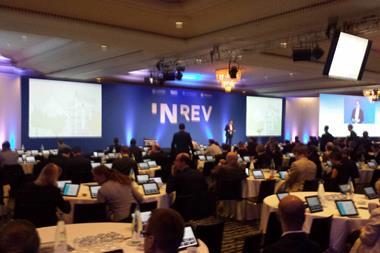There was a consensus at this year’s annual INREV conference that real asset fund models needed to be overhauled, with more than 80% of delegates polled in Vienna saying fund structures needed to be changed.
Speakers from the fund management industry agreed on the need to review fee structures and tackle transparency issues, but they disagreed on the need for liquidity or what form it should take in funds.
Jakob Baruel Poulson, managing partner at Copenhagen Infrastructure Partners, said: “Most of the infrastructure investments our clients had found before were wrapped in some form of private equity structure, which offered a much shorter duration of investment than they were hoping for, as well as much higher gearing and tax inefficiency.”
He added: “Many institutional investors invested in infrastructure only found out later the problems with these types of investments.”
Thomas Gsaenger, head of indirect investments at Allianz Real Estate, said the company was “thinking about a back-ended performance fee, paid out as a share of the fund, which gives a better alignment of interest”.
However, given the German experience with and their liquidity failure during the financial crisis, he was “not sure if it makes sense to have frequent redemption schemes and liquidity in real estate”.
Gsaenger said: “If the fund manager pursues value-add or opportunistic strategies and has an investment plan with dedicated assets, an open-ended fund structure does not make sense; that can only work with core.”
Sophie van Oosterom, CIO at Global Investors, agreed that the “liquidity crisis was the most important theme in all our funds” and that “liquidity is not needed on a daily basis”.
But, she stressed, “it is a myth that separate accounts, direct investments or club deals would provide better liquidity on a daily basis”. She said: “The moment when liquidity is needed is a moment when something happens in the market and that’s when the partners are no longer aligned.”
Van Oosterom said that if an open-ended fund was “set up well, marked-to-market with frequent redemption windows” it should be “able to provide more liquidity on an ongoing basis than some of the direct deals could”.
Paul Clark, CIO at The Crown Estate, said: “A decade ago, there was a much narrower world of co-investing and now we have a greater awareness of issues like liquidity and alignment, which we only paid lip-service to 10 years ago.”
Today, he added, “investors have to take more responsibility for their decisions”.
In 2010, The Crown Estate signed a 150-lease-back deal with the Norwegian Pension Fund Global on Regent Street properties in London for the oil reserve fund’s first foray into real estate.
Clark explained: “Most of our partnerships are for 150 years, but the interest we create is liquid and could be traded.”






